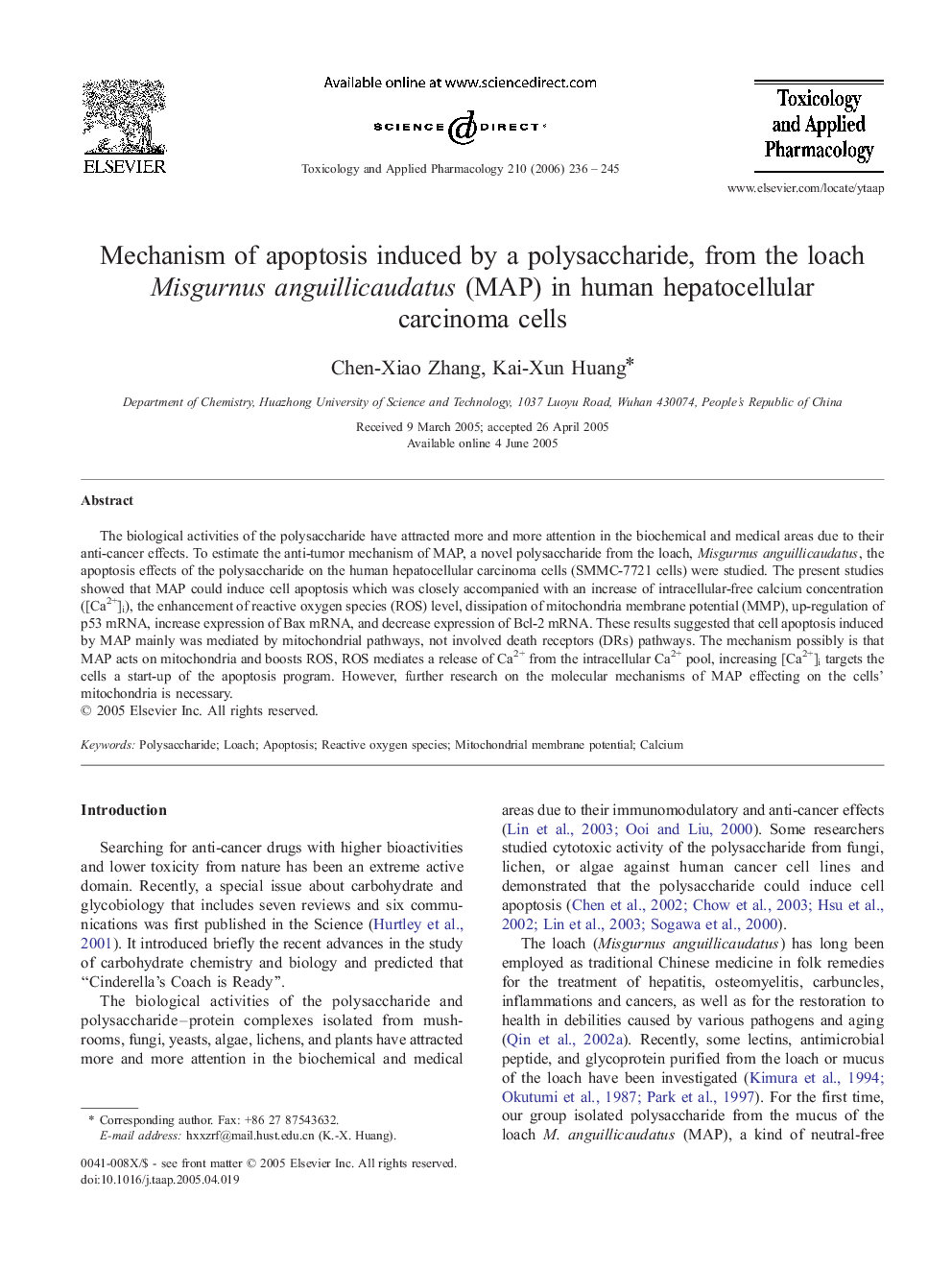| Article ID | Journal | Published Year | Pages | File Type |
|---|---|---|---|---|
| 2572047 | Toxicology and Applied Pharmacology | 2006 | 10 Pages |
The biological activities of the polysaccharide have attracted more and more attention in the biochemical and medical areas due to their anti-cancer effects. To estimate the anti-tumor mechanism of MAP, a novel polysaccharide from the loach, Misgurnus anguillicaudatus, the apoptosis effects of the polysaccharide on the human hepatocellular carcinoma cells (SMMC-7721 cells) were studied. The present studies showed that MAP could induce cell apoptosis which was closely accompanied with an increase of intracellular-free calcium concentration ([Ca2+]i), the enhancement of reactive oxygen species (ROS) level, dissipation of mitochondria membrane potential (MMP), up-regulation of p53 mRNA, increase expression of Bax mRNA, and decrease expression of Bcl-2 mRNA. These results suggested that cell apoptosis induced by MAP mainly was mediated by mitochondrial pathways, not involved death receptors (DRs) pathways. The mechanism possibly is that MAP acts on mitochondria and boosts ROS, ROS mediates a release of Ca2+ from the intracellular Ca2+ pool, increasing [Ca2+]i targets the cells a start-up of the apoptosis program. However, further research on the molecular mechanisms of MAP effecting on the cells' mitochondria is necessary.
